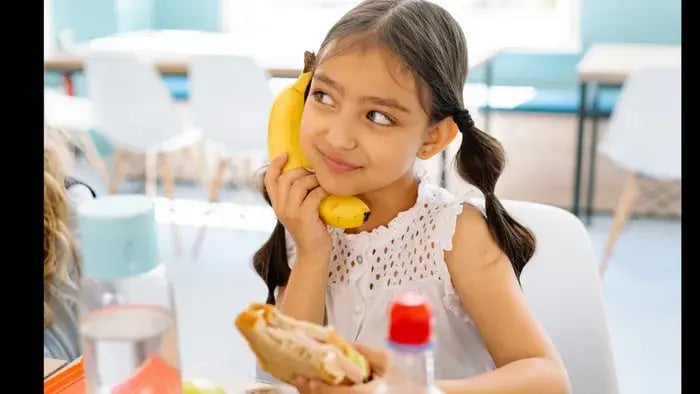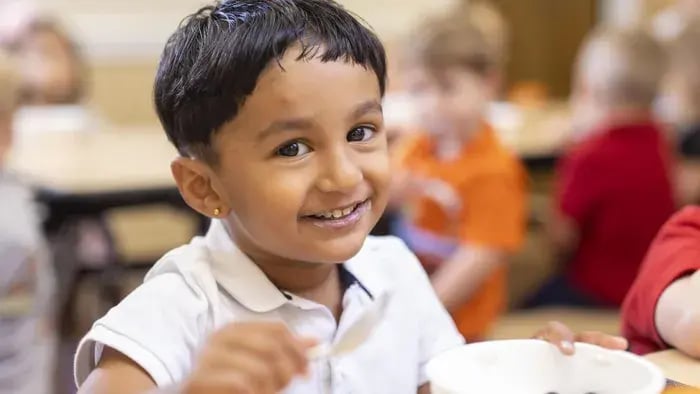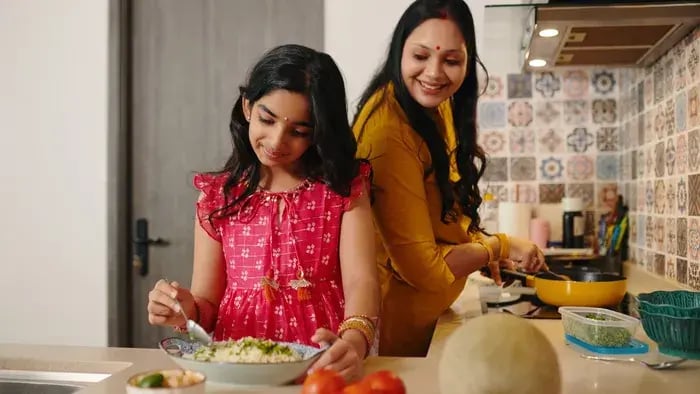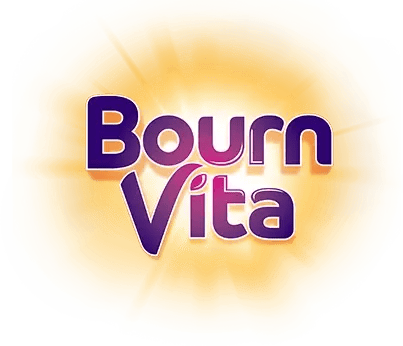- Say a Prayer
- Set Up the Table
- Teach Hygiene Protocols
- Wait for One’s Turn
- Chew With Mouth Closed
- Use Napkins in Between
- Say Thank You and Be Polite
Introduction
Making your child learn table manners is a valuable lesson that helps them be comfortable in gatherings while eating. Table manners is an umbrella term used to define a set of practices, including using the right cutlery and utensils, knowing the correct dining vocabulary, and eating correctly without making a mess. It is about adopting the proper etiquette at the dining table and eating one's food in a manner that doesn't make anyone else feel uncomfortable.
It's also helpful for a child to learn about hosting a party and how to set up everything properly. Your kid can learn the majority of table manners by observing elders at home. Hence, parents can act as a guiding figure in educating their children about proper table manners and how to eat without making a mess.
A Simple Guide for Indian Parents to Learn About Table Manners

Learning about table manners doesn't have to be an overwhelming process. It can become extremely simple by following the given tips and tricks. Parents can start practicing these strategies at home and make their children learn one thing at a time for proper retention and learning.
Say a Prayer
One of the initial things that your child can learn is how to say a short prayer before having their meals. This can be a way to start mealtime on a positive note, and also be grateful for one's meal. It can also make the child understand the importance of their food and make them finish everything on their plate. Parents can make their child see a small yet positive prayer, such as I am thankful for my food.
Set Up the Table
Your child can learn a lot by indulging in day-to-day household chores. To make your child more aware of table manners, you may start assigning them small duties, such as setting up the plates on the dining table. Slowly, when your child may become more accustomed to such duties, you may give them the job of serving chapatis or salads to everyone having the meal. This may make a child more proficient at serving duties, and they can learn how to serve food hygienically.
Teach Hygiene Protocols
The next step is to educate your child about the necessary hygiene protocols that one has to follow while sitting at a table. This includes eating food without spilling it here and there. Additionally, keeping a napkin on one's lap can also be an effective measure to protect one’s clothes from food spillage. Other than this, a child needs to know the importance of putting their dirty utensils back into the kitchen once they're done with their meal.
Wait for One’s Turn
While sitting at a table, a child needs to be extremely patient and wait for their turn. This is a part of the necessary table manners that a child can learn to help them maintain decorum at the food table. When there are a lot of guests, it takes longer than usual for a child to get their food. During such a situation, the child must be taught to patiently wait for their turn to avoid food spillage and confusion.
Chew With Mouth Closed
The next important table lesson a child must learn is how to keep their mouth closed while chewing. If your child keeps their mouth open while eating their food, it may look extremely unhygienic. Moreover, it may make other people highly uncomfortable while having their meals. Additionally, parents can teach their children not to make a lot of chewing noises while trying to eat their food. Taking small bites or eating small portions of rice at a time can help avoid such a problem.
Use Napkins in Between
Kids should be educated about the importance of using napkins between their meals. A napkin isn't just supposed to be used at the beginning or end of a meal. One can use it during the meal to keep cleaning their mouth and hands whenever they feel it's getting dirty. For example, a child can wipe their mouth with a napkin as soon as they feel it has gotten dirty. This may help a child eat their food more comfortably without looking unhygienic.
Say Thank You and Be Polite

Another useful table etiquette that can be taught to kids is using words like thank you and please while being at the dining table. For example, if your child wants someone to pass a particular food item to them, then it's always better to use please before seeing their request. This helps in fostering a positive and kind environment at the dining table. Moreover, it may make your child more respectful towards elders and other people of different age groups.
Conclusion

All these table manners can help your child become a more polite as well as independent individual. A good aspect of teaching table manners to kids is that learning table manners can be easily transformed into an engaging activity. By involving kids in day-to-day chores, parents can foster better and faster learning.
Pakhi writes with the belief that dessert isn’t just a dish—it’s a mood. Her work blends storytelling with tips, turning timeless treats and trendy bites into accessible moments of comfort, celebration, and creative expression.
The views expressed are that of the expert alone.
The information provided in this content is for informational purposes only and should not be considered a substitute for professional medical advice, diagnosis, or treatment. Always seek the advice of your physician or another qualified healthcare provider before making any significant changes to your diet, exercise, or medication routines.
















